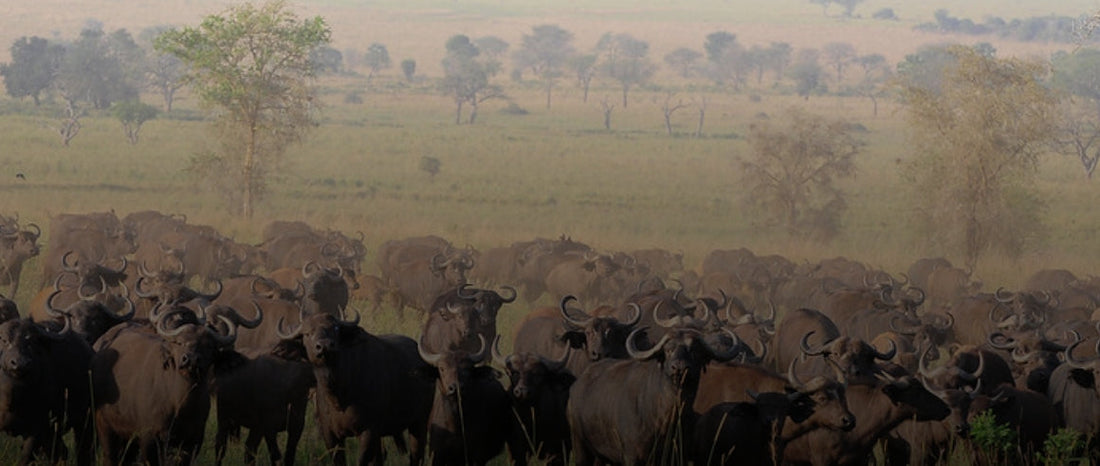
KIDEPO VALLEY NATIONAL PARK
Share
ABOUT THE PARK
Kidepo Valley National Park: Uganda’s Ultimate Wilderness Experience
Kidepo Valley National Park is Uganda’s most remote and least explored national park, yet it is widely regarded as one of Africa’s most breathtaking wilderness areas. Located in the semi-arid valleys of Karamoja, the park borders South Sudan to the northwest and Kenya just 5km to the east, sitting approximately 700km from Kampala.
First gazetted as a national park in 1962, Kidepo is a true safari gem, boasting an incredible variety of big game, unique landscapes, and rich birdlife. It is home to over 77 mammal species and an impressive 476 bird species, making it a prime destination for wildlife lovers and adventure seekers.
Location: karamoja District
Size: 1,442km sq
Altitude: 914m and 2,750m
A Landscape of Untamed Beauty
From Apoka, at the heart of the park, the vast golden savanna extends far beyond the protected area, framed by distant mountain ranges that dominate the horizon. The park’s two main rivers, Kidepo and Narus, dry up during the harsh dry season, leaving behind scattered pools that become lifelines for wildlife.
During the dry months, the Narus Valley is the park’s prime game-viewing area, offering a reliable water source that attracts large concentrations of:
-
Lions – Often seen resting on rocky outcrops
-
Buffaloes – A thriving population of 10,000 to 15,000 individuals
-
Elephants – Their numbers have surged from just 200 in the 1990s to between 650 and 1,000 today
- Zebras, hartebeests, and many more antelope species
The park is also one of the best places to see Rothschild’s giraffes, with the population recovering from a mid-1990s bottleneck of just three individuals to over 50 today, thanks to breeding and successful translocation efforts.
Birdwatching in Kidepo: A Paradise for Ornithologists
With a bird checklist of over 476 species, Kidepo is a dream destination for birdwatchers, featuring several species not found in any other Ugandan park.
Notable Birds in Kidepo Valley:
- Ostriches – The only place in Uganda where they roam freely
-
Secretary birds – Often seen striding across the open plains
-
Northern carmine bee-eaters & little green bee-eaters – Brightly colored and easily spotted
- Abyssinian scimitarbill – A rare and beautiful species for birding enthusiasts
A Unique Cultural Experience
Beyond its natural wonders, Kidepo is home to two fascinating indigenous communities:
The Karamojong – A semi-nomadic pastoralist group, culturally similar to the Maasai of Kenya, known for their cattle-keeping traditions and warrior heritage.
The Ik people – A small, hunter-gatherer tribe living in the mountains bordering Kenya, whose traditional way of life is under threat.
Visitors can interact with these communities, gaining insight into their traditions, storytelling, and daily survival techniques in one of Africa’s most challenging environments.
Why Visit Kidepo Valley National Park?
- Uganda’s most scenic and untouched safari park.
-
Large numbers of lions, buffaloes, and elephants
-
Home to Uganda’s only population of wild ostriches
-
Unparalleled birdwatching opportunities with over 476 species
-
Rich cultural encounters with the Karamojong and Ik people
- A true African wilderness experience, away from the crowds
Though remote and isolated, those who make the journey to Kidepo Valley National Park are rewarded with one of the most spectacular wildlife experiences in Africa. For those seeking untamed adventure, incredible landscapes, and unique wildlife, Kidepo is the ultimate safari destination
PLAN YOUR TRIP
Getting There:
Accessing the park is convenient, with options for both road and air travel.
Kidepo valley national park is located over 600 kilometers from Kampala. You can use charter planes from Entebbe international airport or Kajjansi airstrip to Lomej airstrip taking about 2 hours.
Or getting there by road which may take about 10 hours or more. Most tourists who go there by road some times have a stop over for an overnight and proceed to the national park the next day.
Drive through Soroti-Moroto road and you will be amazed by excellent views over the steep Alekilek volcano about midway Moroto and Soroti. And if you take the Lira-Kotido road, expect to enjoy the scenery of the Labwor hills and in particular the massive and bare Alerek (Kidi Rwot) rock about 55 km to Kotido.
Best Time To Visit:
This national park can be visited at any time of the year however the major wildlife species in the national park can be best viewed during the dry season (between July and August) when most of them gather around the Narus valley.
What to bring:
- Walking Boots
- Sunscreen
- Insect repellent
- Binocular
- Heavy and light clothes
